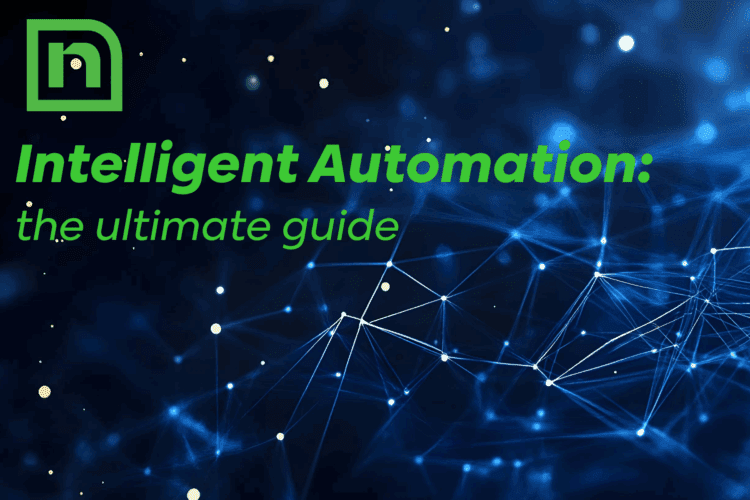If you’ve been hearing the buzz around Intelligent Document Processing (IDP), you might be wondering:
“Is this really that different from what we already use?”
“Is it worth the cost and effort to upgrade?”
Fair questions. Especially if you’re already using OCR or some form of traditional document automation. You’ve likely seen some efficiency gains, and maybe you’re not convinced that IDP is more than just a shinier version of what you already have.
What’s often missed, however, is that while IDP certainly speeds things up, its real strength lies in its ability to help you think bigger and smarter.
Let’s explore how IDP goes beyond automation to become a strategic asset that helps you make better decisions, not just process documents.
How IDP Enables Strategic Decision-Making
IDP vs. OCR: The Value of IDP Beyond Automation
What OCR Brings to the Table
Traditional automation tools like OCR and rule-based systems are excellent at handling repetitive tasks. They can extract data from structured documents, alphabetize files, and follow predefined rules. But they stop there, coming with limitations like:
- They don’t tell you what that data means.
- They don’t help you spot trends.
- They don’t help you make decisions.
And that’s where IDP changes the game.
What IDP Brings to the Table
IDP uses AI, machine learning (ML), and natural language processing (NLP) to both extract and, unlike more traditional automation tools, understand your data. It can process unstructured and semi-structured documents, learn from past interactions, and improve over time. And most importantly, it transforms raw data into structured, usable insights that can fuel strategic decision-making.
From Data to Decisions: How IDP Adds Value
Let’s break down how IDP supports smarter decisions across your organization:
1. Customer Experience Optimization
IDP can analyze customer communications like emails, forms, and feedback, and surface patterns that help you improve service. For example, if your support team keeps receiving similar complaints, IDP can flag recurring themes and help you proactively address them.
2. Risk Management
IDP can scan contracts, claims, and compliance documents to identify anomalies or missing information. This helps you catch risks before they become costly problems.
3. Operational Efficiency
By analyzing document flow across departments, IDP can highlight bottlenecks and inefficiencies. You’ll know exactly where delays are happening and why, so you can fix them strategically.
4. Market Intelligence
IDP can extract insights from external documents like RFPs, press releases, or legal filings. This gives you a competitive edge by helping you understand market trends and competitor moves.
Real-World Example: Healthcare Payers
Let’s say you’re a healthcare payer processing thousands of claims and explanations of benefits (EOBs). With traditional automation, you might extract data and route it to the right system. But with IDP, you can go further:
- Automatically validate data against internal databases.
- Flag anomalies that could indicate fraud.
- Analyze trends in claims to optimize reimbursement strategies.
With these additional capabilities in hand, document processing goes from being just a routine operational task to a source of insight that can support strategic goals.
What to Look for in a Strategic IDP Solution
Not all IDP solutions are created equal. If you’re looking to move beyond automation, here are a few features to prioritize:
- Schema Control: Define exactly what data you want to extract and how it should be structured.
- Validation Workflows: Ensure accuracy with confidence scoring and human-in-the-loop review options.
- Analytics Integration: Feed structured data into BI tools and dashboards for real-time insights.
- Scalability: Handle high volumes of documents without performance degradation.
- Multilingual Support: Process documents in multiple languages with NLP capabilities.
Solutions like UiPath IXP, for example, combine the flexibility of large language models (LLMs) with enterprise-grade controls like versioning, validation, and schema enforcement
Getting Started: From Pilot to Strategic Asset
When you’re ready to get started with IDP, it’s best to start with a pilot. Ideally, you should choose a document-heavy process that’s critical to your business, such as customer onboarding or invoice processing. Then, you can test how IDP performs and ask questions like:
- What decisions did this data help us make?
- What trends did we uncover?
- What risks did we avoid?
When you start seeing answers to those questions, you’ll understand the real value of IDP, and your subsequent efforts will be more successful, to
IDP’s Potential
At the end of the day, every document your organization touches has the potential to inform, guide, protect, and innovate, and IDP can unlock that potential.
It lets you move past simple automation to start empowering your team with the insights they need to make smarter, faster, and more confident decisions.
If you have questions or want to explore how IDP could fit into your organization, please comment below. We’d love to hear from you.





